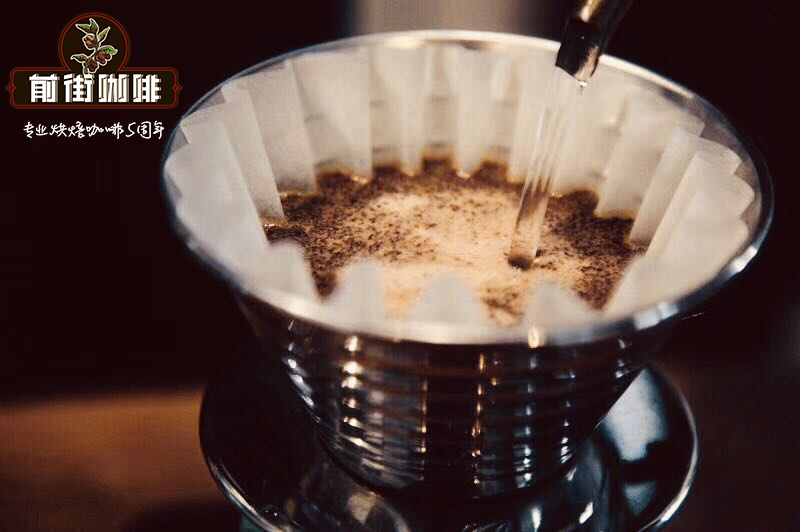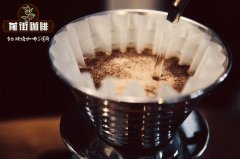Is the coffee honey treatment one of the ways to add honey to know how to treat coffee beans?

Professional coffee knowledge exchange More coffee bean information Please pay attention to coffee workshop (Weixin Official Accounts cafe_style)
Qianjie-Introduction to Coffee Honey Treatment
Honey treatment:
What is honey treatment method: on its English original meaning, its scientific name should be "pulp natural", the same as the traditional wet treatment method, it will coffee cherry thick peel removal, retain its underlying mucilage layer (mucilage), then it does not use fermentation to remove the mucilage layer, instead let it take this layer directly dried, and then directly remove the mucilage layer and shell (parchment)
Difficult honey treatment:
1. During the drying process, because the sticky pulp layer is still on the coffee beans, it is necessary to turn the beans frequently in the early days to avoid sticking together, so it requires more manual parts than the normal washing method.
2. If you don't dry quickly, it's easy to overferment.
3. If the turning is insufficient, or the overall environment is too humid and too cold, or the sticky pulp layer is too thick, the coffee beans will easily mold. Therefore, some coffee estates will use machines to control the thickness of the sticky pulp layer, so that the coffee beans can be dried faster, and the overall taste consistency will be better.
4. It requires more space and takes longer days to dry than wet treatment.
Enhancement method:
1. During the first 2-3 days of sun exposure, preferably under 24/7 supervision, the pulp layer is partially dried and the coffee is less likely to have a bad fermentation taste.
2. During the drying process, a raised scaffold can be used to provide better ventilation and less mildew.
3. If dried on patio or terrace, slime from pulp layer will seep into patio, so clean coffee beans before drying them.
Taste characteristics:
The advantage of honey treatment is that it enhances the body and sweetness of coffee (English also known as honey process or miel process), relatively reduce its acidity, and the aroma will be more detailed, but this is when the honey treatment method is perfectly executed taste, if the implementation is not good, drink up will have a bad acetic acid taste, like onion or garlic spicy flavor, even if the implementation is quite good, still will bring some mud taste, the rest of the rhyme is not clean, miscellaneous taste will be heavier than the general washing method, so overall, The honey treatment carries a much higher risk than wet treatment.
Knowledge development: Arabica coffee beans are mainly produced in South America, Central America, Africa and Asia. Yunnan, Hainan and Taiwan in China also have a small amount of Arabica coffee beans.
In brief: Qianjie is a coffee research center, happy to share knowledge about coffee with everyone, we share it without reservation only to let more friends fall in love with coffee, and there will be 3 low discount coffee activities every month, because Qianjie wants to let more friends drink the best coffee at the lowest price, which is also the purpose of Qianjie for 6 years!
END
Important Notice :
前街咖啡 FrontStreet Coffee has moved to new addredd:
FrontStreet Coffee Address: 315,Donghua East Road,GuangZhou
Tel:020 38364473
- Prev

Is there a big difference between coffee tanning and washing? a brief introduction to the characteristics of Arabica coffee beans
Professional coffee knowledge exchange more coffee bean information please follow the coffee workshop (Wechat official account cafe_style) front street-coffee sun, washing a brief introduction to a variety of treatment methods, the purpose is the same, is to peel beans. Due to the economic considerations of the cost, as well as different natural environmental conditions such as climate, the process of collecting beans may not be the same, but the process
- Next

What is the coffee drying method? there are more than three varieties of coffee beans.
Professional coffee knowledge exchange more coffee bean information please follow the coffee workshop (Wechat official account cafe_style) front street-introduction to coffee honey treatment the most traditional method is the sun treatment; more rainy areas, or more concerned about quality control and mass production of often used water washing; the new environmentally friendly treatment between sun and water washing is semi-washing, slightly improved and turned into honey treatment. In recent years
Related
- Beginners will see the "Coffee pull flower" guide!
- What is the difference between ice blog purified milk and ordinary milk coffee?
- Why is the Philippines the largest producer of crops in Liberia?
- For coffee extraction, should the fine powder be retained?
- How does extracted espresso fill pressed powder? How much strength does it take to press the powder?
- How to make jasmine cold extract coffee? Is the jasmine + latte good?
- Will this little toy really make the coffee taste better? How does Lily Drip affect coffee extraction?
- Will the action of slapping the filter cup also affect coffee extraction?
- What's the difference between powder-to-water ratio and powder-to-liquid ratio?
- What is the Ethiopian local species? What does it have to do with Heirloom native species?

